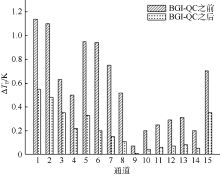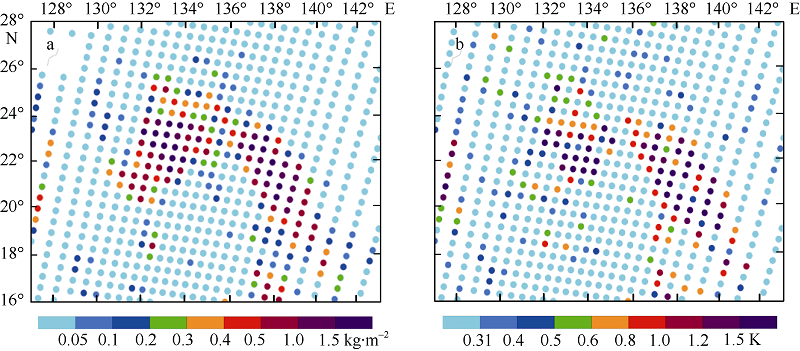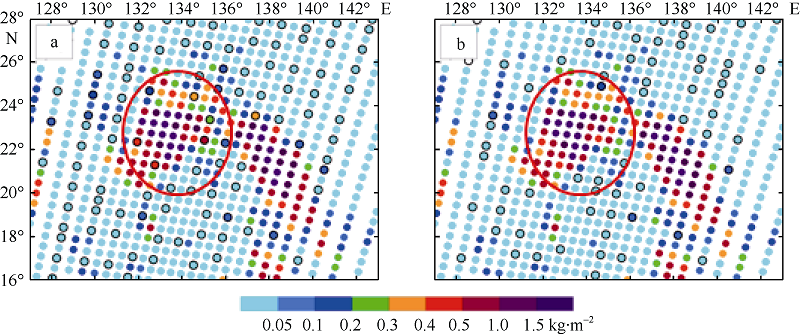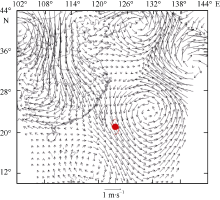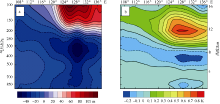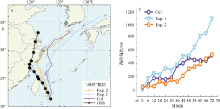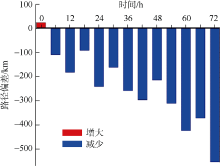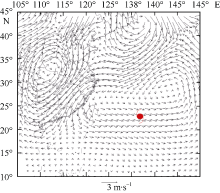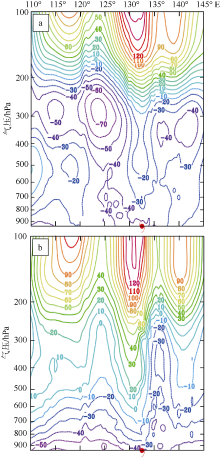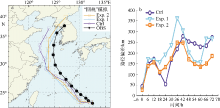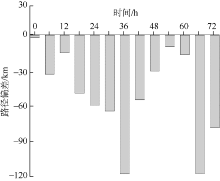| 1 |
任强, 董佩明, 薛纪善, 2009. 台风数值预报中受云影响微波卫星资料的同化试验[J]. 应用气象学报, 20(2): 137-146.
|
|
REN QIANG, DONG PEIMING, XUE JISHAN, 2009. The use of microwave satellite data affected by cloud in numerical forecast of typhoon[J]. Journal of Applied Meteorological Science, 20(2): 137-146 (in Chinese).
|
| 2 |
王云峰, 费建芳, 袁炳, 等, 2013. 消除系统性观测误差的时空梯度信息同化方法研究[J]. 大气科学, 37(1): 54-64.
|
|
WANG YUNFENG, FEI JIANFANG, YUAN BING, et al, 2013. Assimilation of temporal and spatial gradient information to eliminate the systematic observation error[J]. Chinese Journal of Atmospheric Sciences, 37(1): 54-64 (in Chinese).
|
| 3 |
王云峰, 张晓辉, 李运飞, 等, 2015. 基于空间梯度信息的质量控制方法在红外高光谱AIRS资料同化中的应用研究[J]. 大气科学, 39(2): 303-314.
|
|
WANG YUNFENG, ZHANG XIAOHUI, LI YUNFEI, et al, 2015. Application of quality control method based on spatial gradient information in assimilation of infrared high spectrum data AIRS[J]. Chinese Journal of Atmospheric Sciences, 39(2): 303-314 (in Chinese).
|
| 4 |
杨寅, 韩威, 董佩明, 2011. AMSU微波探测资料同化的质量控制方法概述[J]. 气象, 37(11): 1395-1401.
|
|
YANG YIN, HAN WEI, DONG PEIMING, 2011. Overview on the quality control in assimilation of AMSU microwave sounding data[J]. Meteorological Monthly, 37(11): 1395-1401 (in Chinese).
|
| 5 |
ANDERSSON E, PAILLEUX J, THÉPAUT J N, et al, 1994. Use of cloud-cleared radiances in three/four-dimensional variational data assimilation[J]. Quarterly Journal of the Royal Meteorological Society, 120(517): 627-653.
|
| 6 |
BENNARTZ R, THOSS A, DYBBROE A, et al, 2002. Precipitation analysis using the advanced microwave sounding unit in support of nowcasting applications[J]. Meteorological Applications, 9(2): 177-189.
|
| 7 |
BOUTTIER F, KELLY G, 2001. Observing-system experiments in the ECMWF 4D-Var data assimilation system[J]. Quarterly Journal of the Royal Meteorological Society, 127(574): 1469-1488.
|
| 8 |
CHOUINARD C, HALLÉ J, 1999. The impact of TOVS radiances in the CMC 3D variational analysis system[C]// Technical Proceedings of the 10th International TOVS Study Conference. Boulder, Colorado: 92-98.
|
| 9 |
CHOUINARD C, HALLÉ J, 2003. The assimilation of AMSU-B radiances in the CMC global data assimilation system: difficulties and impact relative to AMSU-A radiances[C]// Proceedings of 13th International TOVS Study Conference. Sainte Addle, Canada.
|
| 10 |
COURTIER P, ANDERSON E, HECKLEY W, et al, 1998. The ECMWF implementation of three-dimensional variational assimilation (3D-Var). I: formulation[J]. Quarterly Journal of the Royal Meteorological Society, 124(550): 1783-1807.
|
| 11 |
DERBER J C, WU W S, 1998. The use of TOVS cloud-cleared radiances in the NCEP SSI analysis system[J]. Monthly Weather Review, 126(8): 2287-2299.
|
| 12 |
ENGLISH S J, RENSHAW R J, DIBBEN P C, et al, 2000. A comparison of the impact of TOVS arid ATOVS satellite sounding data on the accuracy of numerical weather forecasts[J]. Quarterly Journal of the Royal Meteorological Society, 126(569): 2911-2931.
|
| 13 |
ENGLISH S J, 2007. Issues in the assimilation of cloud and precipitation affected radiances and prospects for future instruments[C]//Proceedings of ECMWF Seminar on Recent Development in the use of Satellite Observations in Numerical Weather Prediction. Reading UK: ECMWF Publication, 59-74.
|
| 14 |
EYRE J R, KELLY G A, MCNALLY A P, et al, 1993. Assimilation of TOVS radiance information through one-dimensional variational analysis[J]. Quarterly Journal of the Royal Meteorological Society, 119(514): 1472-1463.
|
| 15 |
EYRE J R, 1997. Variational assimilation of remotely-sensed observations of the atmosphere[J]. Journal of the Meteorological Society of Japan, 75(1B): 331-338.
|
| 16 |
GÉRARD É, RABIER F, LACROIX D, et al, 2003. Use of ATOVS raw radiances in the operational assimilation system at Météo-France[C]//Proceedings of 13th International TOVS Study Conference. Sainte Adele, Canada.
|
| 17 |
KELLY G, 1997. Impact of observations on the operational ECMWF system[C]//Technical Proceedings of the 9th International TOVS Study Conference. Igls, Austria: 20-26.
|
| 18 |
LE MARSHALL J F, LESLIE L M, ABBEY R F Jr, et al, 2002. Tropical cyclone track and intensity prediction: The generation and assimilation of high-density, satellite-derived data[J]. Meteorology and Atmospheric Physics, 80(1-4): 43-57.
|
| 19 |
SAUNDERS R, ANDERSSON E, KELLY G, et al, 1999. Recent development at ECMWF in the assimilation of TOVS radiances[C]//Technical Proceedings of the 10th International TOVS Study Conference. Boulder, Colorado: 463-474.
|
| 20 |
TIPHAINE L, NIGEL A, PASCAL B, 2006. AAPP documentation software description document[R]. NWPSAF-MF-UD-002, 1-142.
|
| 21 |
ZHANG HUA, XUE JISHAN, ZHU GUOFU, et al, 2004. Application of direct assimilation of ATOVS microwave radiances to typhoon track prediction[J]. Advances in Atmospheric Sciences, 21(2): 283—290.
|
| 22 |
ZOU XIAOLEI, XIAO QINGNONG, LIPTON A E, et al, 2001. A numerical study of the effect of GOES sounder cloud-cleared brightness temperatures on the prediction of hurricane felix[J]. Journal of Applied Meteorology, 40(1): 34-55.
|
 ), Yunfeng WANG2(
), Yunfeng WANG2( ), Xiaohui ZHANG2, Chengming GU2, Bo ZHONG2, Xingliang GUO2
), Xiaohui ZHANG2, Chengming GU2, Bo ZHONG2, Xingliang GUO2


